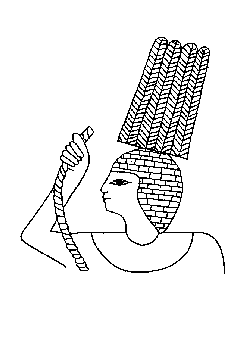
Nombre griego del dios Iniheret, 'Aquel que trae algo de lejos', nombre que se refiere a la interpretación tardía de ciertos mitos. Cuentan cómo el ojo del dios del cielo o dios-sol abandonó a su dueño y fue recuperado por Onuris. El mito se fundó con una historia similar en la que Onuris regresó del desierto con la leona Mehit; ambos fueron venerados en This, en el nomo de Abydos. El ojo de Re se relacionó con una leona y se le denominó Sejmet, aunque también se pudo identificar con Mehit. Onuris era un cazador y un guerrero, que no sólo venció a los enemigos de Egipto sino también a algunos dioses como a Apopis. Sus armas eran una lanza y un lazo. Los textos del Imperio Nuevo llaman a Onuris 'Dios de Dioses', 'el Rey del cielo' y 'Aquel que se creó a sí mismo', convirtiéndole en dios-sol y creador. Onuris también se asimiló en el panteón con otras divinidades ya que por ejemplo fue adorado como Onuris-Shu. En otra versión de la historia fue Shu quien devolvió el ojo, esta vez a la diosa Tefnut, que a veces se representa como una leona. Los mitos sobre el ojo dan a Onuris algunas de las características de Thot, que curó el ojo de Horus. También se relaciona a Onuris con Montu, dios de la guerra, quizás porque ya estaba vinculado a otro dios, Horus ('el de brazo fuerte'). Como sus características eran las de un luchador, los griegos identificaron a Onuris con Ares. Las representaciones le muestran como un dios con apariencia humana, normalmente con una lanza y una cuerda. En otras ocasiones tiene cabeza de halcón y sobre ésta lleva cuatro plumas. La primera evidencia del culto a Onuris proviene de la región de Abydos. En la Baja Época, Nectanebo II construyó o reconstruyó un templo dedicado a Onuris-Shu en Sebennytos, en el Delta.